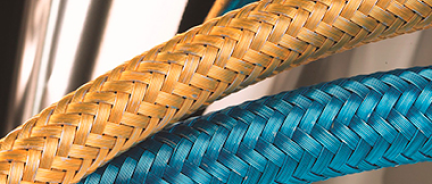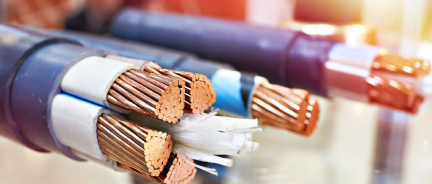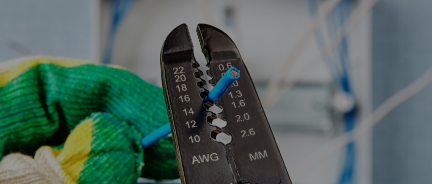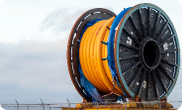Explaining NEC Article 440 on Air-Conditioning and Refrigeration Equipment
Hermetic motors, which are sealed units that operate immersed in refrigerant, are at the heart of air conditioning and refrigeration systems. Their specialised behaviour means they can't be treated like standard motors. That's why NEC Article 440 exists: to supplement Article 430 and other NEC sections with specific rules for short-circuit protection, conductor sizing, overload protection, and disconnecting means in HVAC and refrigeration applications.
This article focuses on single and multiple hermetic motor-compressors, especially those integrated into window A/C units, chillers, split systems, and packaged commercial HVAC equipment.
What Does NEC Article 440 Cover?
Article 440 applies to the installation of:
-
Hermetic refrigerant motor compressors
-
HVAC and refrigeration systems using sealed motor-compressors
-
Room air conditioners (cord- and plug-connected)
-
Equipment combining compressors with other loads (fans, pumps, control panels)
While Article 430 still governs general motor rules, Article 440 provides overrides and additions specifically for refrigeration and air conditioning (A/C) loads. Some equipment, like refrigerators or water coolers, may also fall under Article 422 for appliances [440.3(C)].

Disconnecting Means and Accessibility
Proper disconnection methods are essential for the safe maintenance of air conditioners.
-
Minimum rating must be 115% of the compressor's rated load or branch-circuit selection current, whichever is greater [440.12].
-
Location must be:
-
Within sight and readily accessible (not more than 50 ft) [440.14]
-
Not mounted on service panels or where it blocks equipment labeling
Acceptable Disconnect Types:
-
Manual disconnect switches
-
Lockable circuit breakers
-
Cord and plug (only for specific plug-connected equipment like refrigerators, beverage coolers, or room A/C units) [440.13, 440.63]
Exceptions:
-
Lockable disconnects may be used out of sight only in industrial environments with written safety procedures and qualified servicing personnel.
Branch Circuit Overcurrent and Ground Fault Protection
To protect against short circuits and ground faults:
-
Size the OCPD (Overcurrent Protective Device) initially at 175% of the motor compressor current rating [440.22]
-
If needed for startup, increase up to 225% max using the next available breaker/fuse size.
Sample Sizing:
For a 24A compressor:
-
Conductor size: 24A × 1.25 = 30A → 10 AWG (75°C insulation)
-
OCPD: 24A × 1.75 = 42A → use 40A breaker
-
If 40A trips: 24A × 2.25 = 54A → next lower size is 50A
Equipment with multiple compressors must display the maximum allowable OCPD rating on the nameplate.
Sizing Conductors
Conductors must be sized based on 125% of the rated load or branch-circuit selection current [440.32]. Use NEC Table 310.16 for ampacity.
Sample Sizing:
For an 18A motor:
-
Conductor: 18A × 1.25 = 22.5A → 12 AWG (rated 25A at 75°C)
-
OCPD: 18A × 1.75 = 31.5A → 30A breaker
-
If needed: 18A × 2.25 = 40.5A → 40A breaker (allowed per 240.4(G))
For multiple compressors:
-
Conductor ampacity = 125% × largest compressor + sum of all other loads [440.33]
Room Air Conditioners (Cord-Connected)
Cord-connected room A/Cs (under 40A, 250V, single-phase) must follow Part VII of Article 440 [440.60]:
-
Must have factory-installed AFCI or leakage current detector [440.65]
-
Max cord length:
-
10 ft for 120V units
-
6 ft for 208V/240V units [440.64]
-
Controls must be within 6 ft of floor or within sight of the plug disconnect
-
If used on shared circuits:
-
Total A/C load = ≤50% of circuit if sharing with other loads [440.62(C)]
-
Max rated A/C unit = ≤80% of circuit OCPD if standalone [440.62(B)]
Cable Types and Wiring Methods for NEC 440
Wiring for HVAC and refrigeration systems must be chosen to accommodate:
-
High motor startup currents
-
Outdoor exposure
-
Vibration and mechanical stress
Branch Circuit Wiring:
-
THHN/THWN-2: Standard for indoor conduit installations
-
XHHW-2: Higher heat rating; common in rooftop or wet locations
-
MC Cable: Often used for interior branch wiring; available with copper or aluminum conductors
-
SE or USE-2: Used to feed outdoor condensing units from service panels; must be sunlight- and moisture-resistant
Conduit Systems:
-
EMT: Used indoors for surface-mounted raceways
-
LFMC: Liquidtight flexible metal conduit for vibration isolation and outdoor equipment
-
LFNC: Liquidtight flexible nonmetallic conduit for similar applications with easier handling
-
PVC Schedule 40/80: For buried outdoor runs with required burial depths
Overload Protection and Control Circuits
-
Compressors must include internal thermal overload protection or use listed external overload devices [440.52]
-
Control circuits (Class 2 or 3) must be kept separate from power wiring unless co-rated [440.64]
When using shared enclosures, maintain physical separation or use listed dividers to avoid interference and fire risk.
Final Thoughts
NEC Article 440 delivers precise rules for wiring, protecting, and disconnecting hermetic motors in HVAC and refrigeration systems. Key takeaways:
-
Always size conductors at 125% of the rated load
-
Size OCPDs based on startup current, up to 225% if necessary
-
Ensure disconnects are visible, accessible, and lockable
-
Select cable types based on heat, moisture, flexibility, and location exposure
Whether you're installing a rooftop commercial condenser, a residential split system, or a plug-in room A/C unit, following Article 440 ensures safe performance and code compliance for these high-demand electrical systems.
Nassau National Cable carries a wide range of cables required for air conditioners.


















